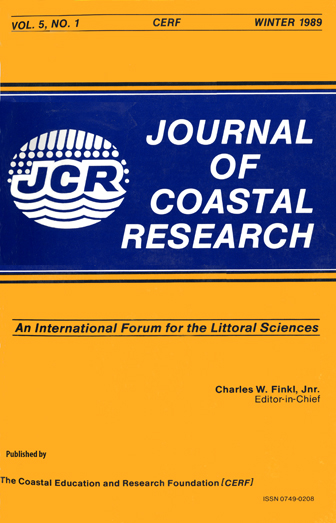Shoreline Responses to Hurricane Bonnie in Southwestern Louisiana
Keywords:
Cyclic beach response, Hurricane Bonnie, natural beach, modified or scraped beach, revetmentAbstract
Hurricane Bonnie made landfall in June 1986, with an intensity upon landfall uniform across southwestern Louisiana. This provided a unique opportunity to monitor the short-term response of three different types of shorelines to the same high-energy event. The shorelines included a natural system, one that had been slightly modified by scraping the backbeach, and one that had been artificially stabilized by a revetment and partially fronted by segmented breakwaters. Although these shorelines were connected at slight angles, each shoreline type was relatively straight, had open exposure to the Gulf of Mexico, and was not affected by additional storms during the monitoring period, which lasted six months. The natural and modified systems recovered favorably and followed the well-documented cyclic trend of storm-induced erosion to poststorm deposition. Deposition occurred primarily at the lower foreshore from ridge-and-runnel migration. Prestorm volumes were either approached or achieved. The revetment shoreline exhibited persistent erosion throughout the study. The initial losses were minimal at the artifically stabilized shoreline, but because of continued poststorm erosion, the overall response suggests a much longer recovery time for it than for a natural or slightly modified system.


